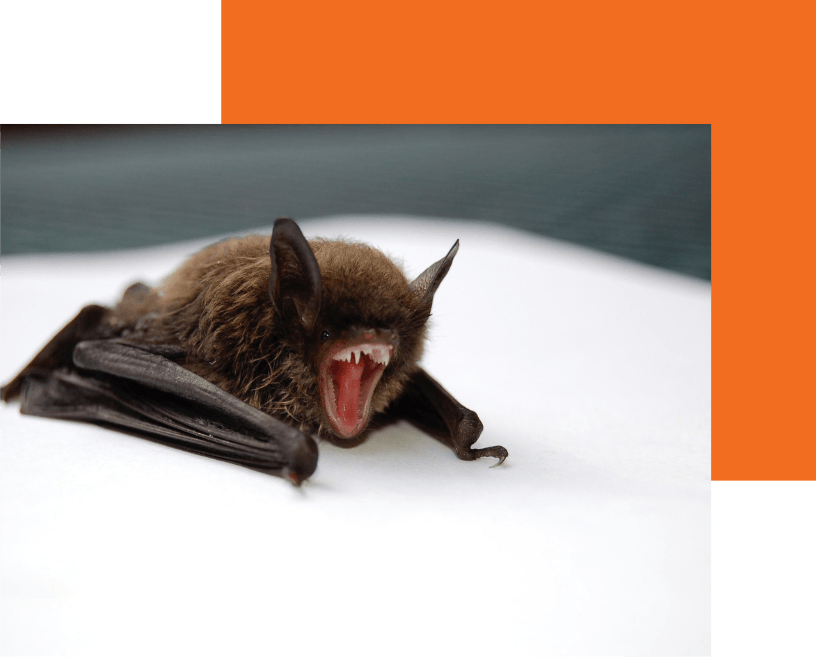Bats
There are many different pests that scare us. Most of us don’t like spiders or bees. Rodents will send us scurrying up onto a chair. Snakes rank right up there on our most-feared list, too. But of the many pests known around the world, perhaps none is scarier than the bat.
Bats have been associated with evil and horror since ancient times, long before Bram Stoker ever picked up a pen. In Greek mythology, they were believed to carry the restless souls of the damned and were worshipped by Pluto and Proserpina, the rulers of the Underworld. In old European folklore, they were thought to be the consorts of witches, devils, and demons. In African and pre-Columbian civilizations, they had supernatural powers. In fact, they are still used in voodoo in Africa and parts of the Caribbean even today.
Then, of course, there’s the vampire. Going back to our Irish author friend, Bram Stoker, it was he who forged the link between bats and vampires in what might be the most iconic horror novel of all time, Dracula. When Count Dracula turned into a bat, it seems the whole world responded and went, “Aha! We knew it!” Since that time, we’ve probably associated them with vampires more than any other symbol of the macabre. The coupling permeates our culture in both literature and film. (Go ahead and try to find a vampire movie that doesn’t have a single appearance of one in it.) It’s an easy association to make, considering that some species really do feed on blood. Vampire bats even feed exclusively on blood.
Luckily for us, we don’t have to worry about vampire bats or other species that feed on blood, which are only found in Central and South America. Nevertheless, we do have quite a few species here in the United States. Most of the bats here feed primarily on insects and fruit, while a few will hunt small vertebrates like frogs and mice. But bloodsucking or not, we still have plenty of cause for concern. While they are not the harbinger of evil that fiction and folklore portray them to be, they are still dangerous animals and are highly destructive when they target our homes.
In Missouri and Illinois, several species are known to get into buildings and houses, including the Big and Little Brown, the Northern Long-ear, the Eastern Pipistrelle, the Gray, the Red, and the Evening Bat, among a few others. They are continually on the lookout for a cozy place to roost, and unfortunately, your attic is just as enticing as a cave. They can squeeze in through a hole as small as a quarter, and once they’re in, they can make quite a mess. Just the overpowering stench from their droppings alone—urine and guano—can be unbearable and will eventually permeate your entire home if you have a large enough infestation. Furthermore, they will bite if provoked and they are known carriers of vermin and disease, including rabies and histoplasmosis. While rabies is not that common, histoplasmosis is especially dangerous to your health; plus, you don’t have to be bitten to get it, as it comes from the guano and is easily airborne.
If you’ve seen one in or near your home or heard scratching or squeaking noises in your attic or walls, please don’t attempt to deal with it yourself. Aside from the dangers we noted above, it is also against state law for anyone other than a licensed professional to remove bats. The presence of one bat often indicates that a larger colony may be nearby. Your wisest move is to contact a professional pest control company right away for assistance.
The top-rated expert in bat control and removal in Missouri and Illinois is Cardinal Insect & Pest Solutions. We won’t show up with garlic or a wooden stake, but we will utilize the latest technology and our years of expertise to take care of your problem humanely, quickly, and efficiently. And we promise our pricing won’t bite, either. Give us a call today.


